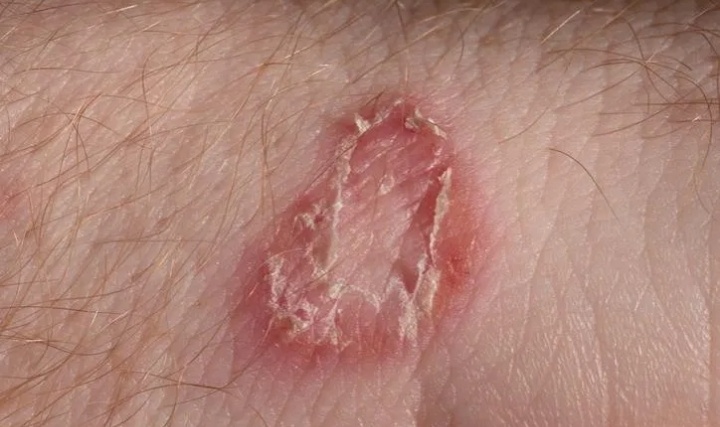"Healthy skin is a reflection of overall wellness"
Ringworm or tinea refers to several types of contagious infections of the top layer of the skin, scalp and nails. Ringworm is caused by mould like fungi, that eats keratin, protein found in skin, hair and nails
 It is called ringworm because the itchy, red rash has a ring like appearance. However ringworm is nothing to do with worms.
It is called ringworm because the itchy, red rash has a ring like appearance. However ringworm is nothing to do with worms.
TYPES:
1. Tinea cruris (or jock itch): On the groin, inner thighs, and buttocks
2. Tinea barbae: On the beard area
3. Tinea manuum: On the palms of the hands
4. Tinea capitis: On the scalp
5. Tinea unguium (or onychomycosis): On the fingernails and toenails
6. Tinea pedis (or athlete's foot): on the soles of the feet
SYMPTOMS:
The specific symptoms of ringworm, depend on the location of the infection.
They typically include
1. Itchy skin
2. A ring shaped rash
3. Hair loss in the affected area
PREVENTION:
1. Ringworm is highly contagious, before symptoms are even apparent, you can catch ringworm by having direct skin to skin contact with affected areas of an infected person's body.
2. Avoid Playing with pets.
Care for skin for speedy recovery:
1. Wash skin with baby soap.
2. Pat the skin with a towel, do not rub.
3. Dry the skin gently
4. Change socks or underwear more often than usual, if they are covering infected areas.
5. Wear loose fitting clothing and garments
General line of treatment for ringworm:
1. Gandak rasayan 1bd for 15days
2. Panchatikta kashaya 4ml tid
3. Triphala guggulu 1tid for 15days
4. Trichoderma ointment for application
5. Use coconut oil on infected areas, this oil works against fungi.

- By Dr. Sridevi R. Alva
